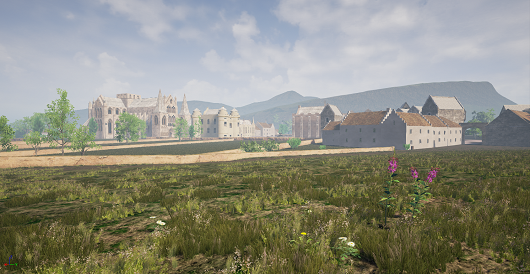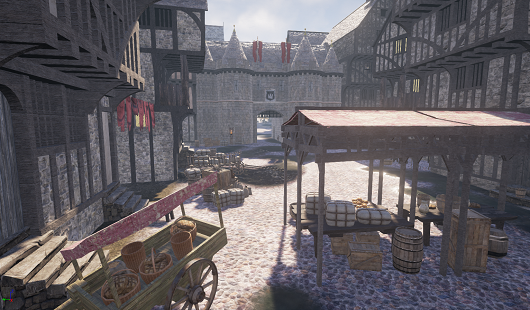New technology opens doors to the past

Virtual time travellers will be able to step back in time to 16th century Edinburgh this summer, using a new app created thanks to experts at the University of St Andrews.
Designed by the University’s spinout company, Smart History, Virtual Time Binoculars: Edinburgh 1544 provides a unique window into the capital around the time of the birth of Mary Queen of Scots.
Using the virtual reality app for mobiles, visitors and residents of Edinburgh will for the first time be able to compare the city they know with the capital of King James V. The new digital reconstruction is the first to be created of the period, and is based on a drawing from 1544, thought to be the earliest accurate depiction of the capital.
Stereoscopic video and 360 degree images created in the game environment allows virtual visitors to experience what it was like to move through Edinburgh’s streets and to be immersed in the city’s architecture of the period.
The technology – the result of a collaboration between University historians, art historians, computer scientists and Smart History – propels users 450 years back in time, just before the city was sacked and burned by an English army led by Edward Seymour, Earl of Hertford.
The trailer app released today (Friday 2 June) features a new, ground breaking reconstruction of Holyrood Palace.
Using VR headsets and mobile phones, virtual time-travellers are given a top-down view of reconstructions of landmark present day sites such as St Giles’ Kirk, as well as long-lost landmarks such as the Nether Bow Port.
Catherine Anne Cassidy, a researcher with the School of Computer Science, said: “The app guarantees to floor you, whether in virtual reality mode or fullscreen. Much time and consideration was taken to build this past world, which shows in the reconstruction’s beauty. And now, via our technology, all of it will be at your fingertips as you explore Edinburgh.”

When users arrive at a site, a geo-location based map informs them where they are in relation to the 16th century reconstruction, and allows historic exploration within today’s modern city. Users can select to be taken on a suggested tour of the sites, or choose to visit the locations at their own leisure.
The app enables users to view the reconstructions either via traditional screens, or through a more immersive virtual reality experience with videos and 360 degree photospheres and interactive hotspots providing images and information about the history of the site.
Sarah Kennedy, a researcher for Smart History, said: “This has been a wonderful project to be involved in. Edinburgh is such an amazing city and it has been fascinating translating historians’ research into a virtual reconstruction, recreating the streets and buildings that that made up the city at that time. We hope this visualisation will give a better understanding of Edinburgh in the early 16th century.”
The app – which is Google Daydream enabled – drew on recent developments in the creation of digital landscapes, as well as benefitting from software originally devised for the gaming industry, such as the Unreal gaming engine.
The digital reconstruction is inspired by a drawing created by the English military engineer Richard Lee, who accompanied the Earl of Hertford’s expedition. Lee’s drawing (now held by the British Library) was probably the first moderately realistic depiction of Edinburgh, and became the defining English impression of Scotland’s capital.
The interdisciplinary team of St Andrews researchers supplemented the information from Lee’s plan with archaeological evidence, sixteenth-century written sources, and information about the geography of the modern city, to create an updated reconstruction of Edinburgh.
Members of the public will have the opportunity to explore the full app (and a range of accompanying web-based resources) at free events at the Museum of Edinburgh on Friday 7 and Saturday 8 July 2017.
Background information
The project team included: Dr Alan Miller, Sarah Kennedy, Dr John McCaffery, Dr Iain Oliver, Catherine Anne Cassidy (School of Computer Science), Professor Richard Fawcett (School of Art History) and Dr Bess Rhodes (School of History).
The app is available on Google Play; for more information on the project visit the EPSRC IAA blog.
Smart History is a spin-out company from the University of St Andrews.
A digital view of the 1544 Lee plan of Edinburgh is available on the British Library website.
Issued by the Press Office, University of St Andrews. Contact Gayle McIntyre via [email protected] or 01334 462530.
Category Research